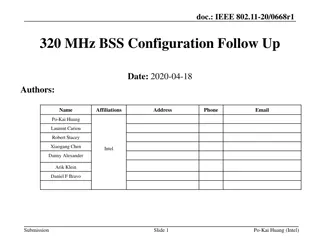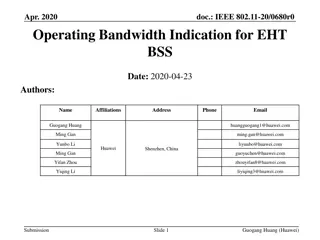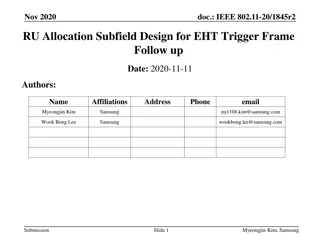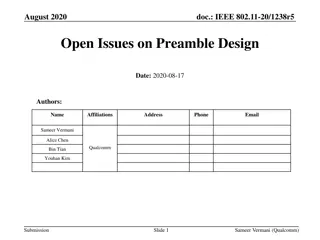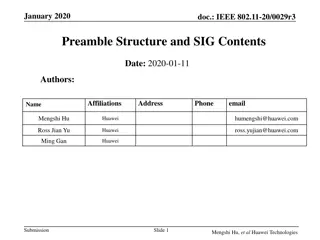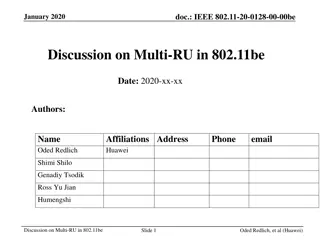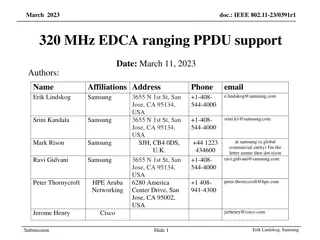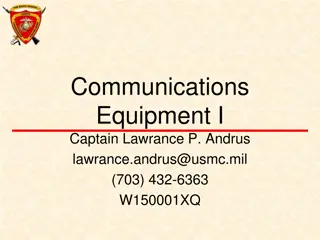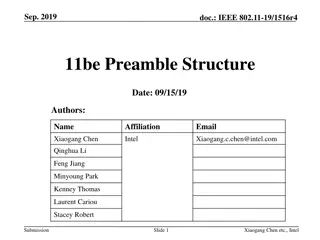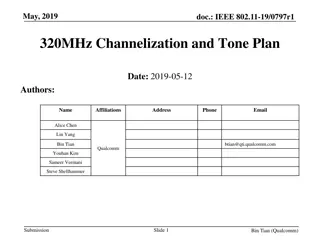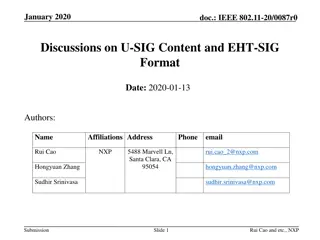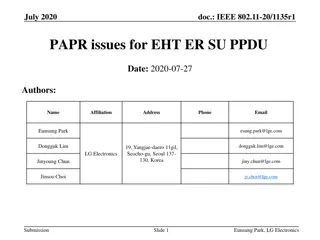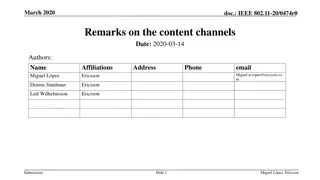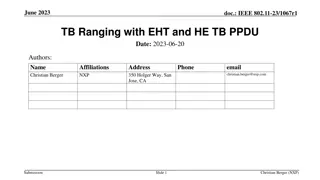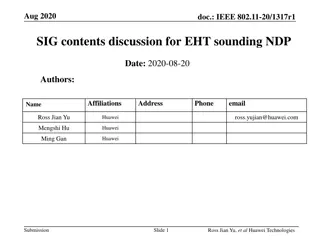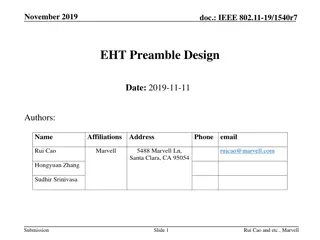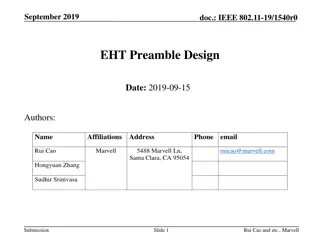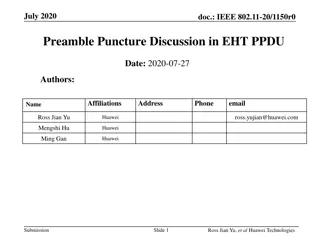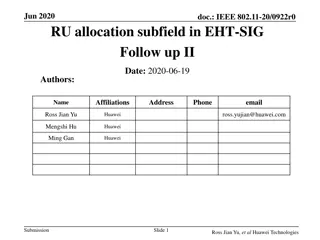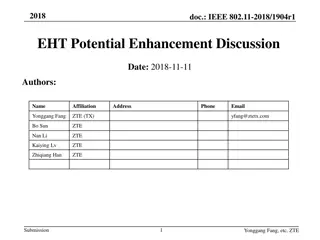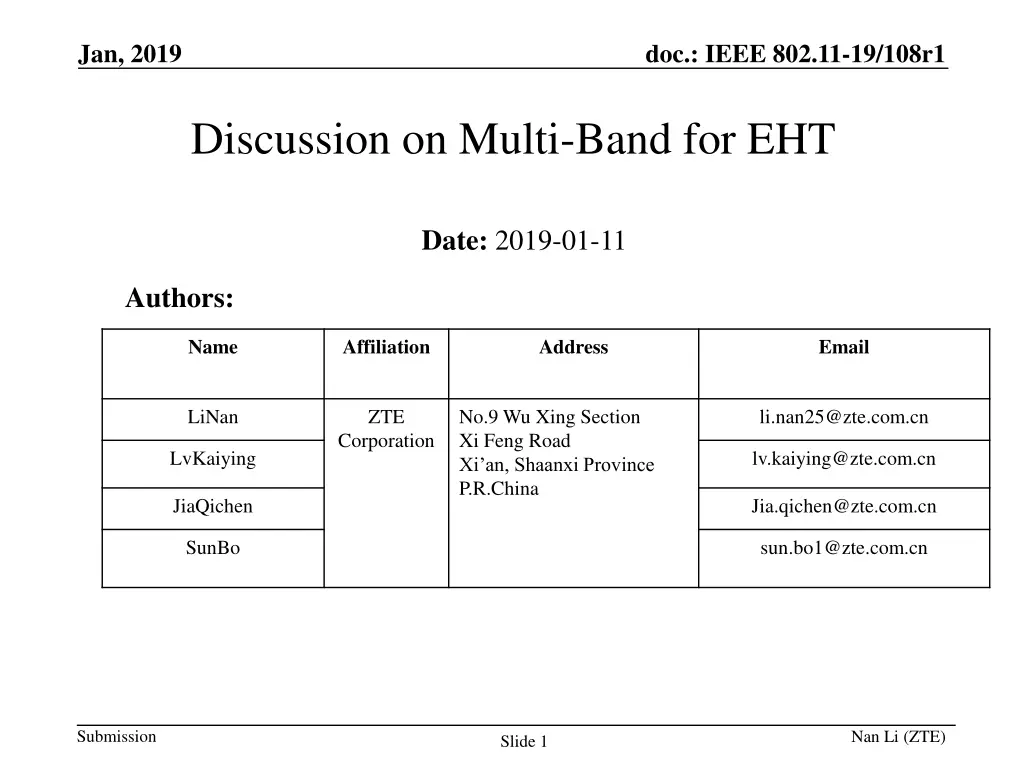
Understanding Multi-Band Technology for Enhanced High Throughput
Explore the concept of multi-band technology in IEEE 802.11 standards for achieving Enhanced High Throughput (EHT). Learn about the seamless session transfer, transparent and non-transparent FST mechanisms, and potential enhancements for better user experience in multi-band operations.
Download Presentation

Please find below an Image/Link to download the presentation.
The content on the website is provided AS IS for your information and personal use only. It may not be sold, licensed, or shared on other websites without obtaining consent from the author. If you encounter any issues during the download, it is possible that the publisher has removed the file from their server.
You are allowed to download the files provided on this website for personal or commercial use, subject to the condition that they are used lawfully. All files are the property of their respective owners.
The content on the website is provided AS IS for your information and personal use only. It may not be sold, licensed, or shared on other websites without obtaining consent from the author.
E N D
Presentation Transcript
Jan, 2019 doc.: IEEE 802.11-19/108r1 Discussion on Multi-Band for EHT Date: 2019-01-11 Authors: Name Affiliation Address Email LiNan ZTE No.9 Wu Xing Section Xi Feng Road Xi an, Shaanxi Province P.R.China li.nan25@zte.com.cn Corporation LvKaiying lv.kaiying@zte.com.cn JiaQichen Jia.qichen@zte.com.cn SunBo sun.bo1@zte.com.cn Submission Nan Li (ZTE) Slide 1
Jan, 2019 doc.: IEEE 802.11-19/108r1 Introduction Multi-band was initially introduced in IEEE 802.11ad. A multi-band capable device can manage operation over more than one frequency band/channel. The operation across the different frequency bands/channels can be simultaneous or nonsimultaneous[1]. Fast Session Transfer (FST) is a significant feature for Multi-band operation in IEEE 802.11ad . Current FST feature is reviewed and investigated for EHT application in this presentation. Submission Nan Li (ZTE)
Jan, 2019 doc.: IEEE 802.11-19/108r1 Multi-band Overview FST provides a mechanism for transfering sessions from one band/channel to another band/channel seamlessly. eg: Streams on 2.4/5GHz could be transferred to 60GHz for high throughput,or load balancing. Streams on 60GHz could also be transferred back to 2.4/5GHz for extended range and reliabilty. Two FST mechanisms are supported : Nontransparent FST: different bands are identified by different MAC addresses. It is a basic mode for multiband devices Transparent FST: It needs to virtualize a unique MAC address for multiple bands and present to higher layers, which makes the higher layers unaware of the stream transfer between bands compared with nontransparent FST Submission Nan Li (ZTE) Slide 3
Jan, 2019 doc.: IEEE 802.11-19/108r1 Multi-band Overview Transparent FST: One MAC-SAP to highlayer State information(BA agreements, association state, SNs,etc. )are shared between bands A Transparent FST Entity manages MSDUs forwarding to related bands. Nontransparent FST: Separate MAC-SAPs to highlayer State information are local for each band. Submission Slide 4 Nan Li (ZTE)
Jan, 2019 doc.: IEEE 802.11-19/108r1 Multi-band for EHT Dual-band or tri-band APs and terminals have been a trend for Wi-Fi equipments nowadays. Multi-band operation is a promising technology for EHT, which could achieve high throughput and flexibility with two or more radios working on different bands. Both non-transparent and transparent FST prcedure could be reused for EHT in the following scenarios: Seemless session transfer between bands.This can be supported by the current FST without any change. Steering data on different bands according to the availability/priority of each band. Prior information about the channel state and pre-defined channel priority are needed. Submission Slide 5 Nan Li (ZTE)
Jan, 2019 doc.: IEEE 802.11-19/108r1 Multi-band for EHT Further enhancements could be considered on multi-band operation for EHT, eg: to enable finer traffic steering separating MSDUs based on ACs, TIDs, user groups, etc. for better user experience. to provide more efficient management or control frame transmission separating mangement and control frames from data frames on different bands. to facilitate more reliable and lower latency transmission dynamic duplication of an MPDU on different bands. to provide flexible DL/UL transmission flexibe DL/UL configuration or scheduling Submission Slide 6 Nan Li (ZTE)
Jan, 2019 doc.: IEEE 802.11-19/108r1 Summary Fast Session Transfer for multiband operation in current IEEE 802.11-2016 and Wi-Fi certification programs is reviewed. Two modes of Fast Session Transfer should be considered in EHT multiband operation to help efficient use of all bands that the APs/STAs support and optimize the performance of Wi-Fi network in many scenarios. Further enhancements could be considered. Submission Nan Li (ZTE)
Jan, 2019 doc.: IEEE 802.11-19/108r1 Reference [1]IEEE Std 802.11 -2016 Submission Nan Li (ZTE) Slide 8

